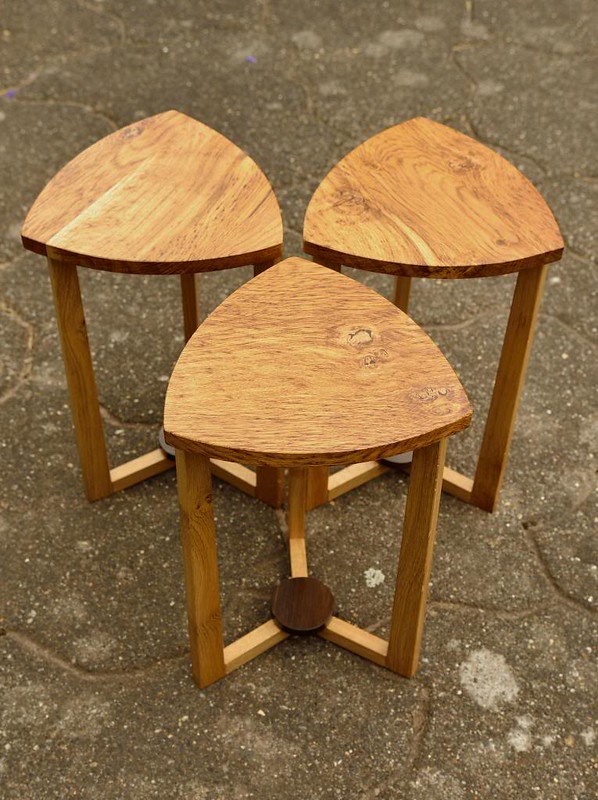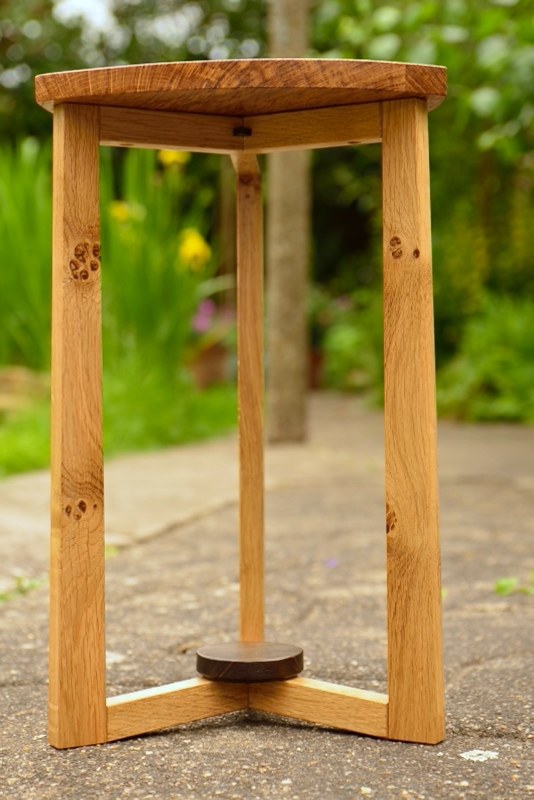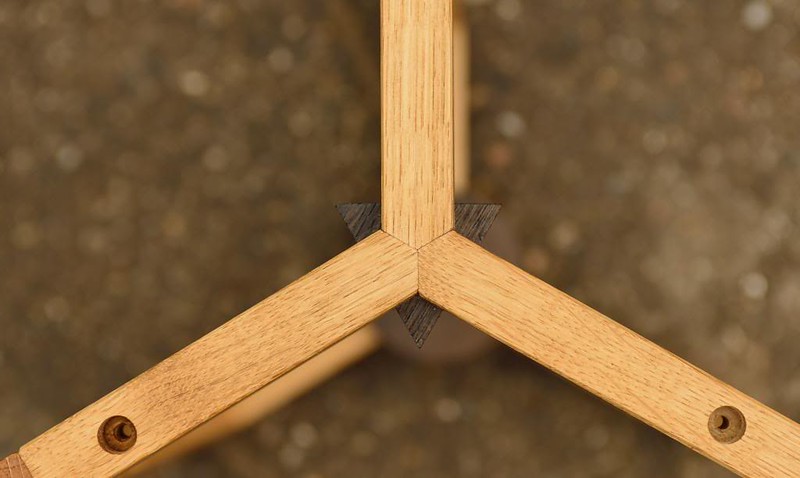Been looking for a floor lamp for the bedroom for a while and can’t find what we’re looking for, so I’m going to make one that amalgamates the features of two we like. The body of the lamp is a tripod, excuse the sketch, sketching is not my strong point!

I’ve worked out pretty standard solutions for most of the joints, but the point in the base where the three legs come together is stumping me. I planning on a three way ‘mitre’ using splines to provide the required strength.

The mock up is a little rough, but as proof of concept it’s convinced me I can make the joint. And with a little practice and some more accurate/improved jigs I think the quality will be acceptable. However I’m still left with two questions:
1. Is there a more standard joint for this type of application, if so what is it called?
2. Are the any obvious problems/issues with the joint I’ve contrived that I’m not seeing that mean it’s a non starter?
Thanks and any other related thoughts/comments welcomed.
Fitz.

I’ve worked out pretty standard solutions for most of the joints, but the point in the base where the three legs come together is stumping me. I planning on a three way ‘mitre’ using splines to provide the required strength.

The mock up is a little rough, but as proof of concept it’s convinced me I can make the joint. And with a little practice and some more accurate/improved jigs I think the quality will be acceptable. However I’m still left with two questions:
1. Is there a more standard joint for this type of application, if so what is it called?
2. Are the any obvious problems/issues with the joint I’ve contrived that I’m not seeing that mean it’s a non starter?
Thanks and any other related thoughts/comments welcomed.
Fitz.


















































